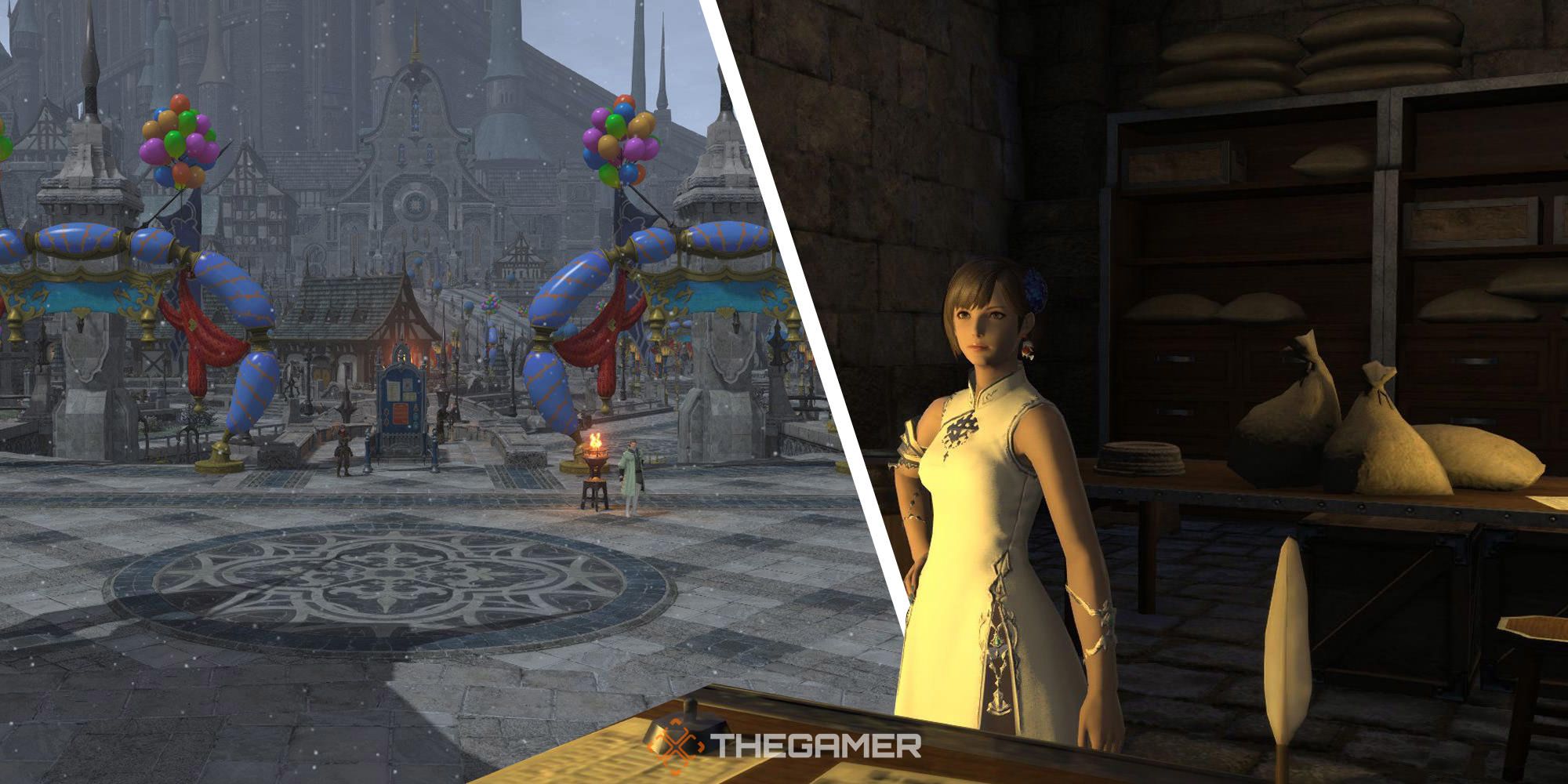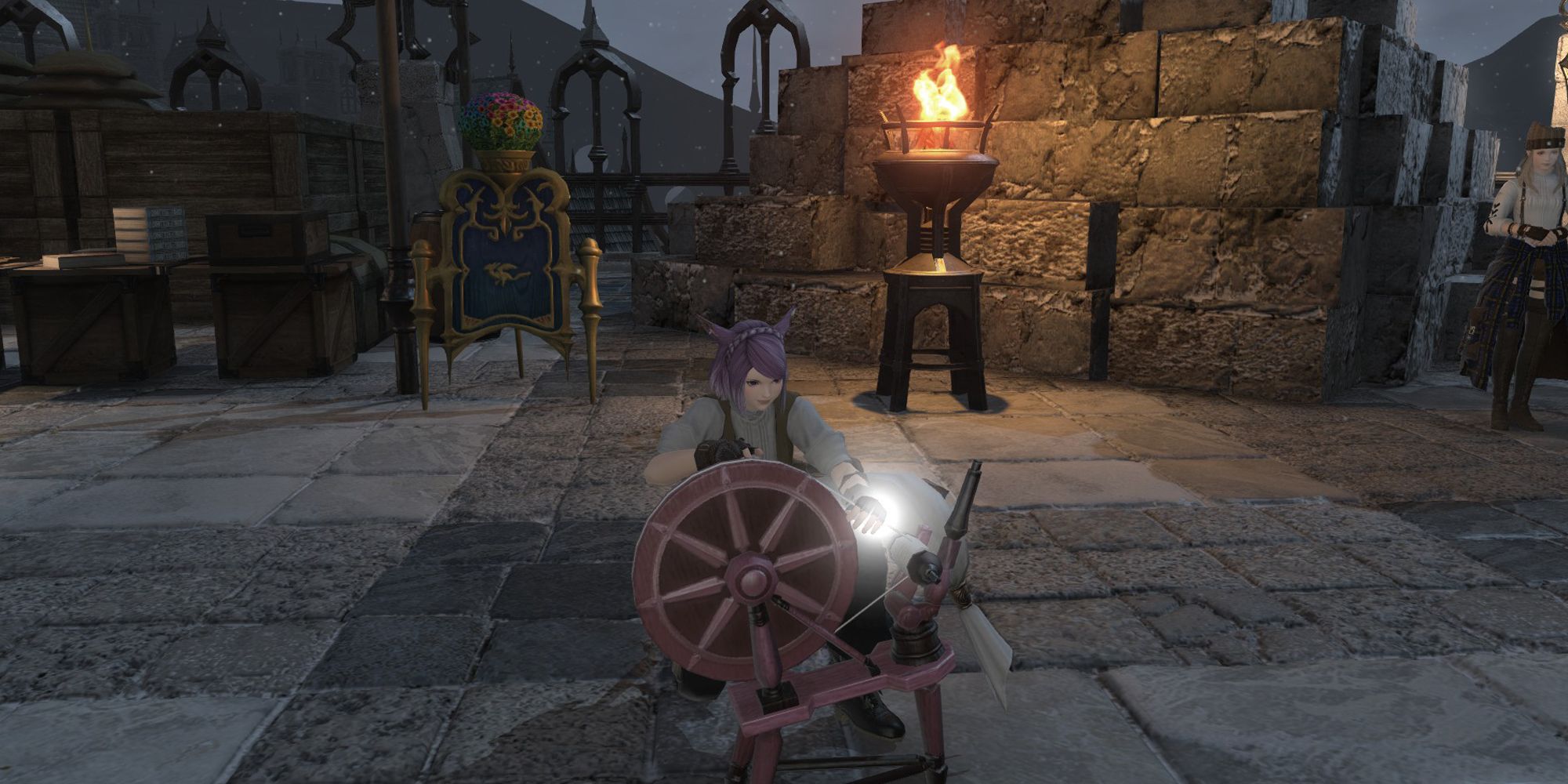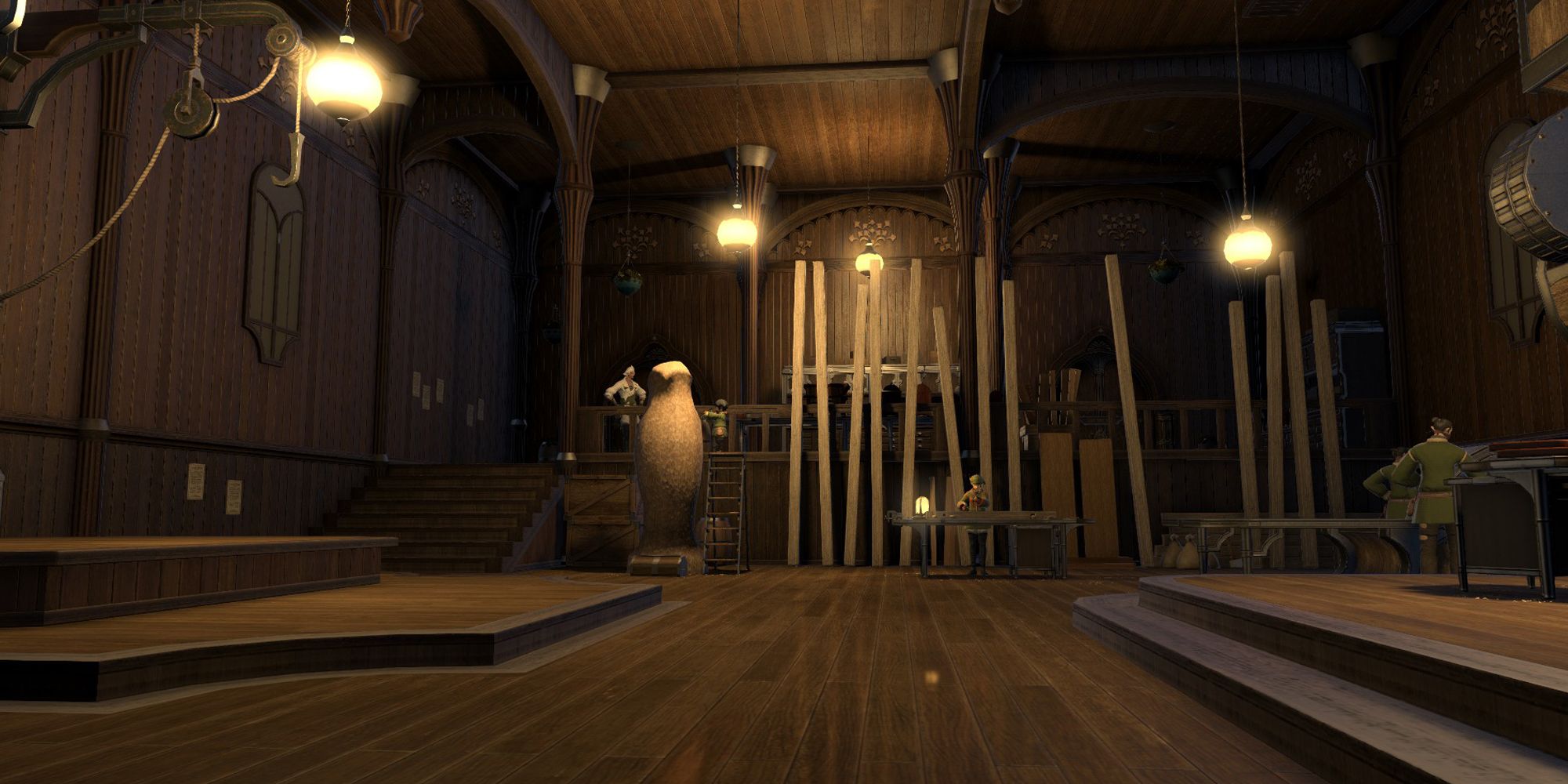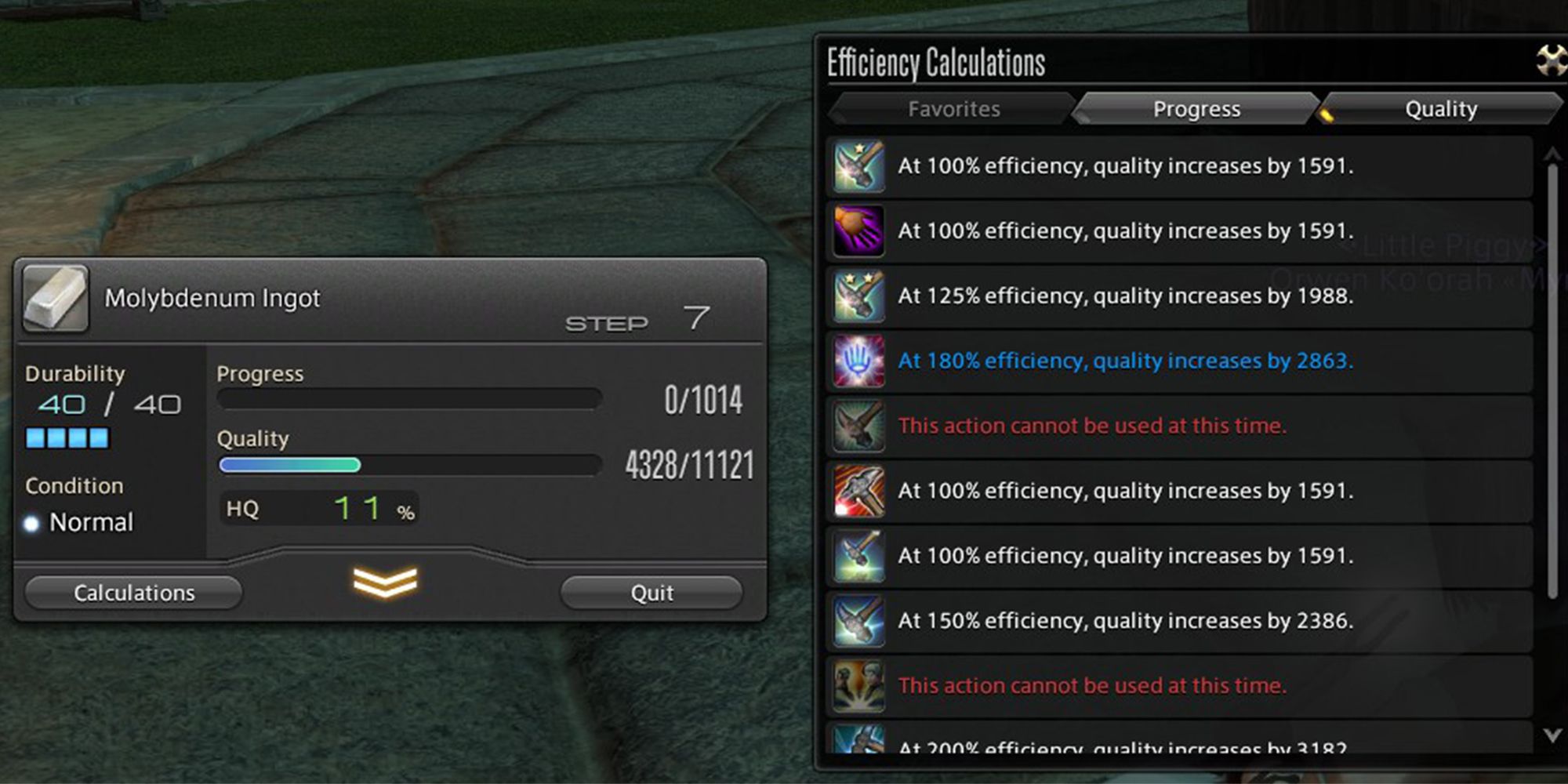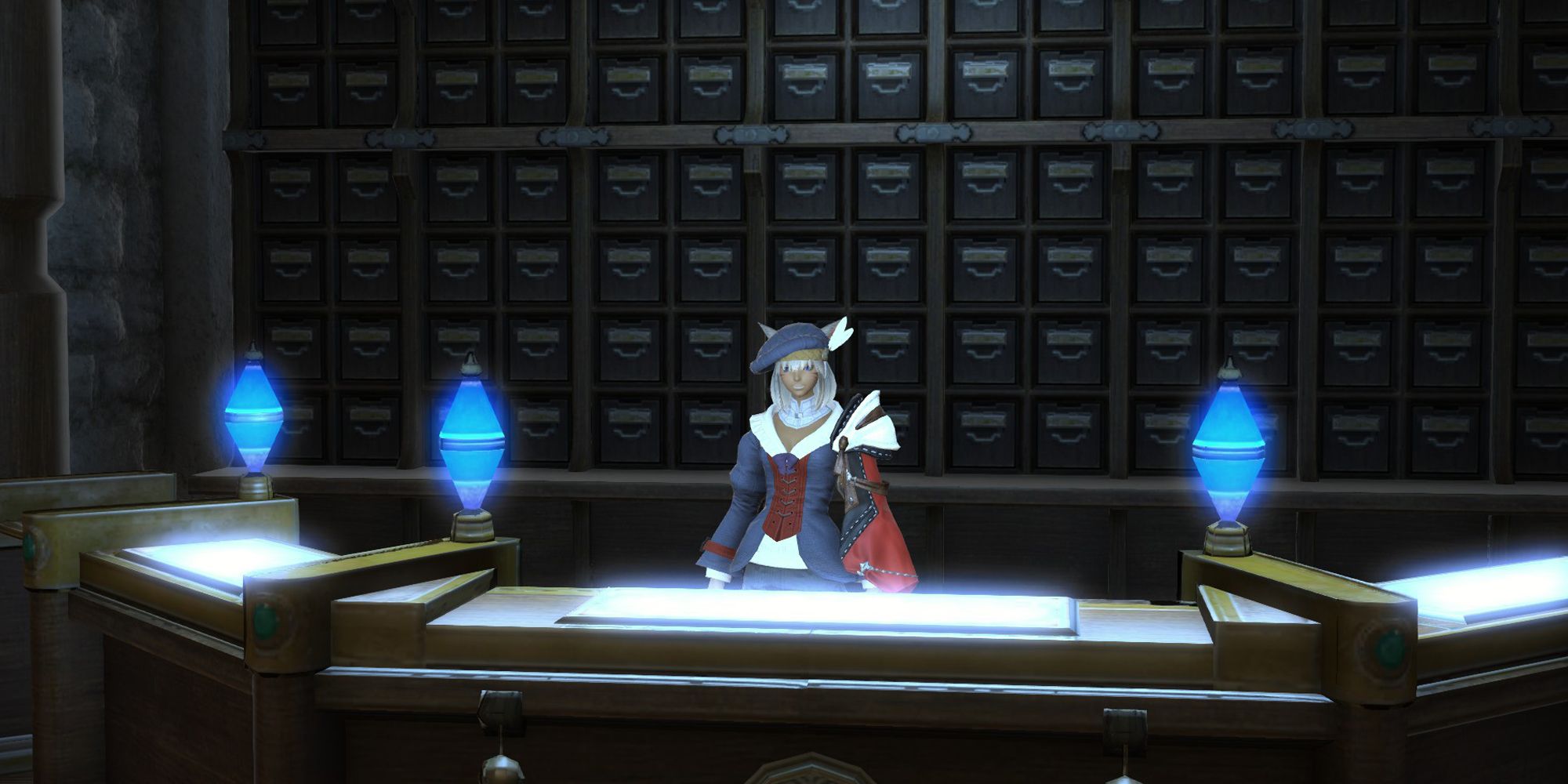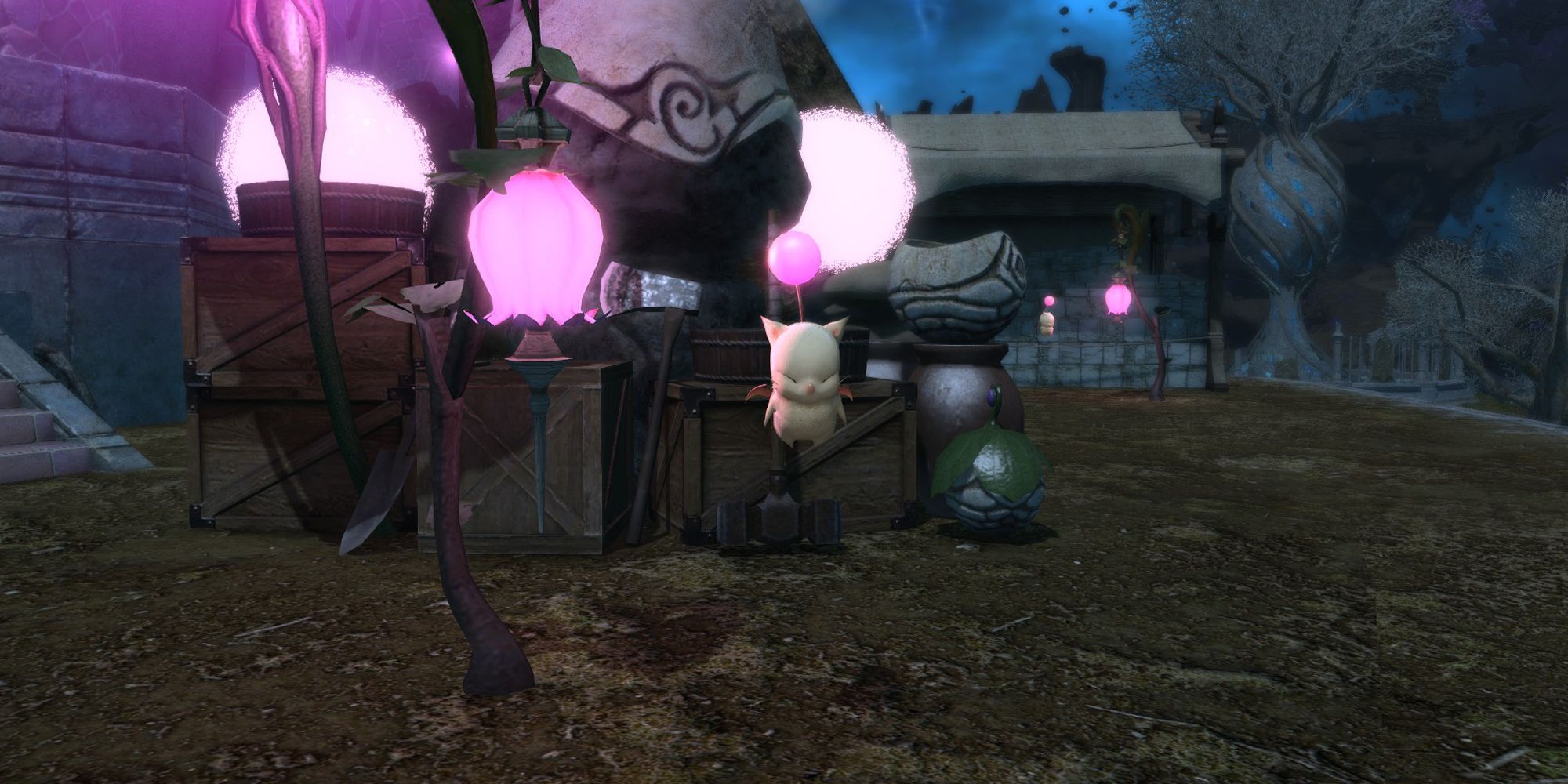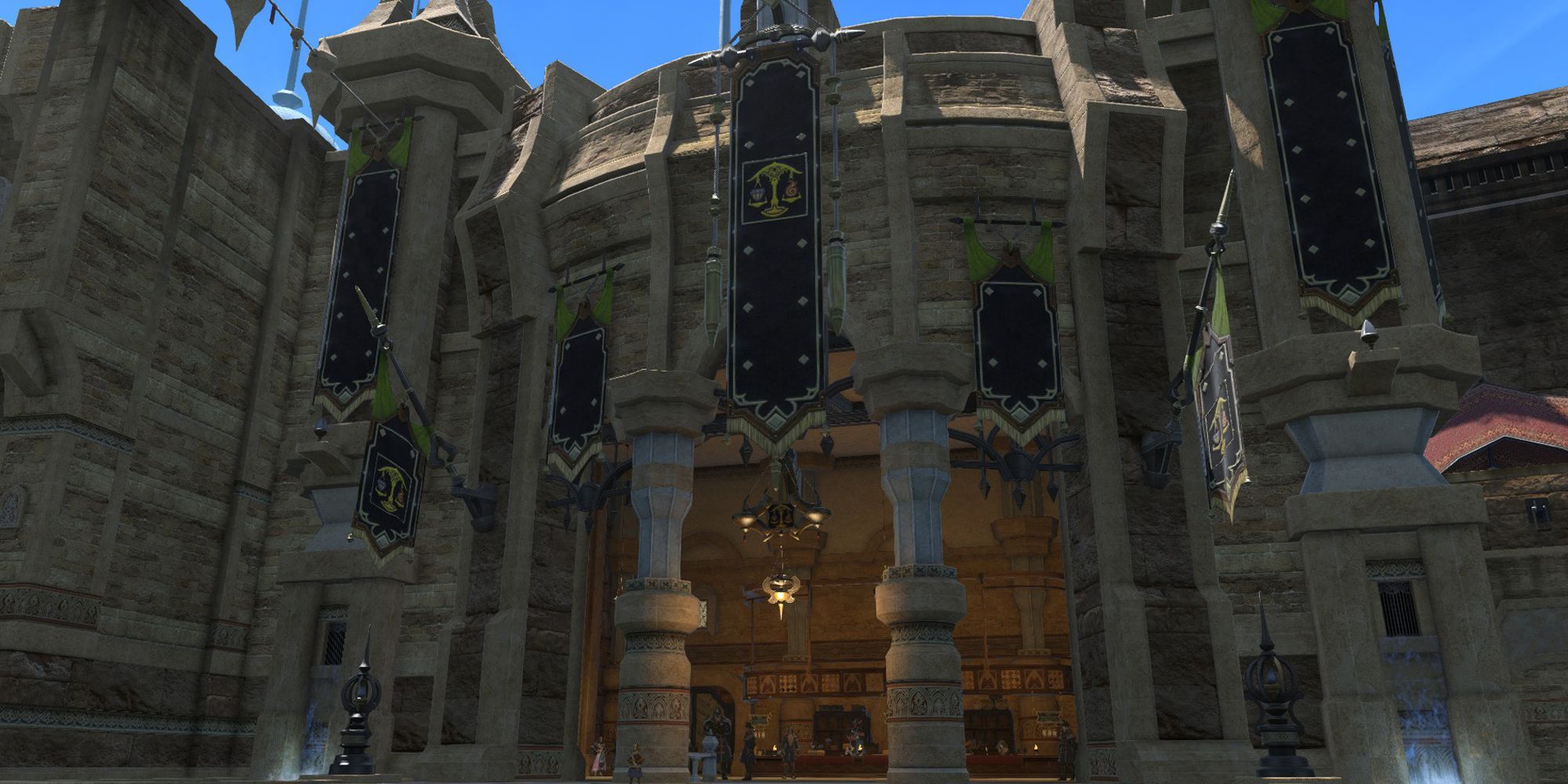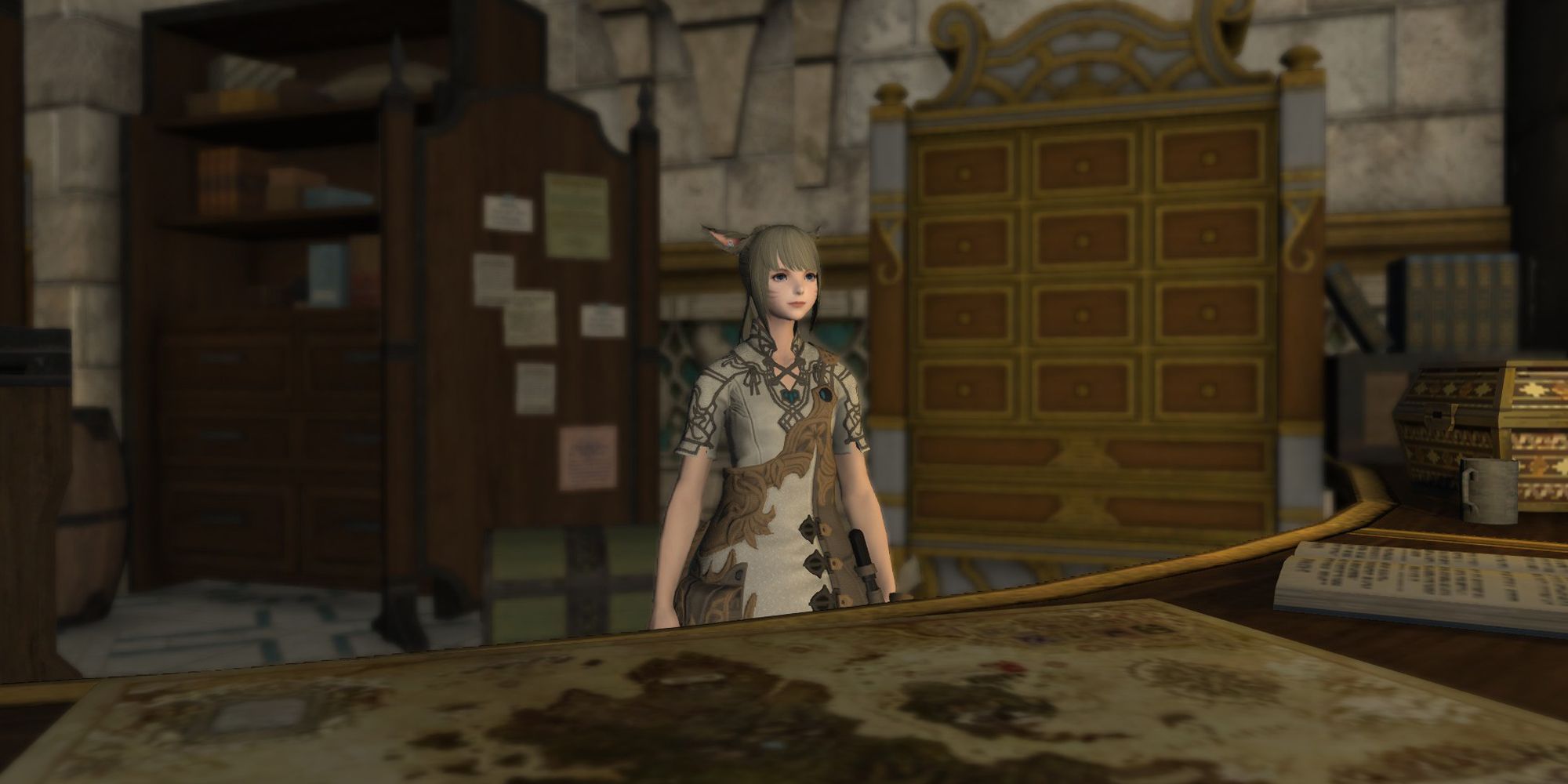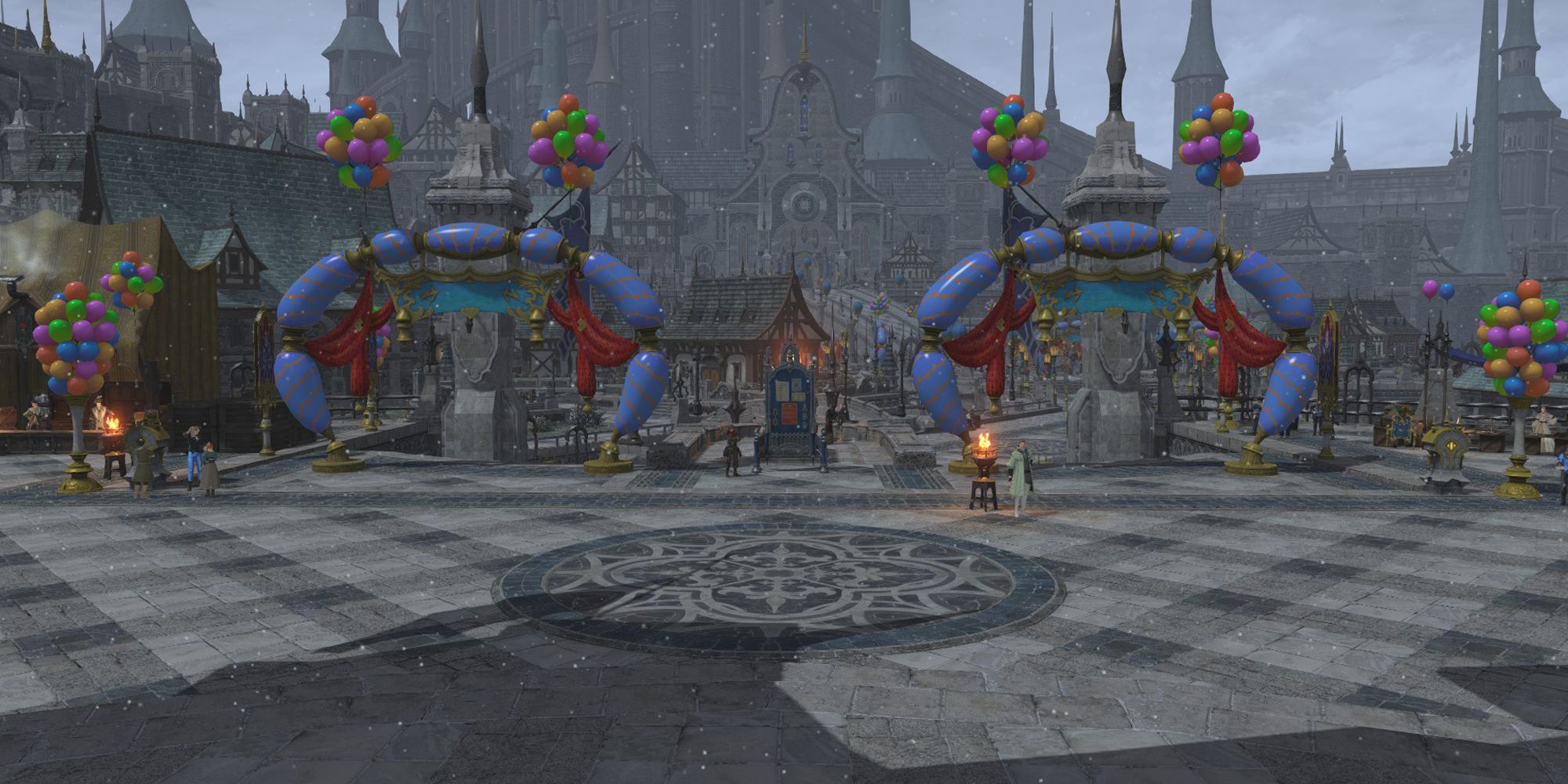Quick Links
Crafting in Final Fantasy 14 is a unique experience that is quite different from other methods of crafting in other MMOs. Eight crafting classes, 90 levels, and hundreds of recipes can seem overwhelming to players deciding to start their crafting journey. If you're wondering where to even begin, we've got you covered.
Let's take a look at the basics of crafting, why you would want to level a crafting Job, and a few of the ways you can quickly level up your crafters.
Updated February 16, 2022: With the release of Final Fantasy 14's fourth major expansion, Endwalker, a few crafting mechanics have been overhauled. We've updated this guide to reflect the changes made to crafting Jobs in the most recent expansion, as well as some additional tips for getting familiar with your first crafting Job.
The Basics Of Crafting
There are currently eight crafting classes in the game, each with its own unique recipes and tools. This may seem like a lot to keep track of, but it's actually quite simple. Each class, provided they are the same level, will wear the same armor. The only equipment that changes between them is their primary and secondary tools. Additionally, each class learns the exact same actions, meaning they all play and function the same.
However, this doesn't mean you should only level up one crafting class. While this is a viable option if you just want to make food, or craft the newest glamour clothes, you won't be able to truly shine as a crafter without having all eight jobs leveled up.
Being a self-sufficient crafter at the max level will have you switching back and forth between the different jobs to craft various ingredients you will need for high-level recipes. If you just want to level one class, you can take a look at what each one specializes in below:
| Crafting Job | What they can craft |
|---|---|
| Carpenter |
|
| Blacksmith |
|
| Armorer |
|
| Goldsmith |
|
| Leatherworker |
|
| Weaver |
|
| Alchemist |
|
| Culinarian |
|
Why Level A Crafting Class?
There are many different reasons why you would want to level up your own crafting classes. Maybe you heard you can make tons of gil from crafting, or maybe you're tired of relying on your friends to craft food or armor for you. In any case, having even just one crafting class leveled gives access to tons of new content in the game.
Crafting classes also grant access to self-repairs, removing the need for repairing at an NPC, which costs gil. Crafters can meld materia into gear, which will grant a flat stat bonus. Additionally, crafters have access to desynthesis, which will let you break down unwanted items for materials and other valuables.
Getting Started With Crafting
Now, let's go over what exactly you'll be doing as a crafter. Like other Jobs in the game, crafting classes have abilities that you will use to craft an item. Before you start crafting, there are three crafter-specific stats you need to keep in mind.
| Craftsmanship | Increases the amount of Progress you gain when using Progress-increasing actions |
| Control | Increases the amount of Quality you gain when using Quality-increasing actions |
| CP | Resource spent when using most crafting actions |
These stats are found on Disciple of the Hand specific armor, primary tools, and secondary tools. Some crafting recipes require a specific combination of craftsmanship and control, so make sure you meet the requirements before beginning a craft.
Your goal when crafting an item is to first and foremost, make the progress bar fill up all the way. This is done primarily through the use of synthesis actions. When the progress bar is filled, the item will be completed.
Your second goal is to make the item High Quality (HQ). This is done by filling the quality bar before finishing the item. You will typically use touch actions to increase quality. However, unlike progress, the quality bar does not have to be filled entirely for you to craft an HQ item. Instead, increasing the bar increases your chance for the product to be HQ.
The third thing you will have to pay attention to is the item's durability. Each action you take will reduce the item's durability. If durability reaches zero before you finish the craft, the item will be destroyed and you have a chance to lose the materials you put in. Some actions can restore durability, or prevent durability loss for a duration. Always make sure the next action you take won't reduce the durability to zero!
It may be difficult to tell how much quality you will gain when using a quality-increasing action. Luckily, you can use the calculations screen to see exactly how much quality any given action will grant. This makes it easy to ensure you aren't wasting any actions, which can lead to failing a craft. You can also use this menu to see progress-based actions.
As you level up, you will unlock more actions, and crafting will get a little more complex. Luckily, the following basic formula is always relevant.
- Increase quality before progress
- Increase progress after quality is at suitable level
- Always make sure durability is above zero
At first, you don't even really have to worry about making an item HQ. It will grant bonus experience and can be turned in for more experience and rewards, but just crafting the item is enough at early levels.
At level 10, you will gain access to the Trait Inner Quiet. This passive Trait will grant you a stack of Inner Quiet every time you use an ability that increase Quality, up to a maximum of 10. Each stack of Inner Quiet grants you a 10 percent increase to the efficiency of Touch actions, making Quality even easier to increase.
Keeping track of and increasing Inner Quiet stacks will be your bread and butter while leveling up your crafting Jobs. At level 50, you will unlock the ability Byregot's Blessing, which will increase quality by an increasing amount depending on your Inner Quiet stacks.
How To Level Up Crafting Jobs
There are a few different ways to level your crafting classes. We recommend a combination of these methods, as only doing one on its own will either be slow or too tedious. The methods that grant the most amount of experience are mostly time-gated, meaning you won't be able to grind out your blacksmith to max level in a day or two.
Let's go over each method for leveling.
Levequests
Levequests are repeatable quests that are divided into Battlecraft Leves, Crafting Leves, and Gathering Leves. Each crafting class has its own Levequests, which will ask you to craft and deliver specific items. You can accept these quests from Guildleves NPCs in various locations. Accepting a Levequest will require one Levequest allowance, which generate at a rate of six per day.
Levequests are a time-efficient method for leveling. You don't have to spend tons of time crafting items, and the returns are pretty good. The best way to use Levequests, if you have the gil for it, is to accept Levequests that ask for an item you can easily purchase from a merchant.
For example, the level 68 Goldsmith Levequest 'Untucked' tasks you with delivering one Palladium Tuck, which can be purchased from Itto the Arms Dealer in the Kogane Dori Markets for 39,564 gil. You can purchase and turn in as many of these as you have the gil for, allowing to blaze through crafting levels. Keep in mind that this will cost a lot of gil if you want to go from, for example, levels 60-70, but it's one of the fastest ways of leveling your Jobs.
Beast Tribe Daily Quests
Another time-gated, but extremely effective form of leveling is Beast Tribe Quests. You can accept three quests a day from any given Beast Tribe, but only some of them are crafting-based. Beast Tribes that have crafting-based quests are as follows:
| Beast Tribe | Relevant Levels | Quest To Unlock |
|---|---|---|
| Ixali | 1-50 | 'A Bad Bladder' - Scarlet in New Gridania (X:9.9, Y:11.4) |
| Moogle | 50-60 | 'Tricks and Stones' - Seething Stonemason in The Churning Mists (X:27.2, Y:34.5) |
| Namazu | 60-70 | 'One Size Fits All' - Seigetsu the Enlightened in The Azim Steppe (X:6.1, Y:23.2) |
| Dwarf | 70-80 | 'It's Dwarfin' Time' - Affable Townsdwarf in Kholusia (X:15.7, Y:30.3) |
While Beast Tribe Quests are good overall, the Ixali take too much investment for too little payoff. Stick with other leveling methods until you get to level 50 and can unlock the Moogles, where Beast Tribe Quests really start to take off.
Grand Company Turn-ins
Grand Company Turn-ins are a daily source of experience and Grand Company Seals. Turn-ins are daily requisitions that your Grand Company will ask you to deliver. The items they request will be around your current level, and can be purchased from the Market Board.
Turning in High Quality items will reward you with double the experience. This is a fast and easy way to gain tons of experience, so be sure to deliver these items as often as possible.
Collectibles
Collectible crafting is unlocked at level 50. Collectibles are a different form of crafting that will produce a Collectible item at the end of a successful craft. Instead of filling the quality bar to make the item HQ, you fill the quality bar to increase the item's collectability. The higher its collectability, the higher the rewards you will receive upon turning it in.
Collectibles are turned in at any Collectible Appraiser around the map, usually found in major cities. Depending on the level of the craft, and your crafter's current level, you will get experience points and Crafters' Scrips, which will be used at higher levels for various things.
Overall, making collectibles is a good, non-time-gated method for quickly leveling crafters. However, it does require some investment into your crafting gear to make items with high collectability.
Custom Deliveries
Custom Deliveries are a weekly source of experience and Crafters' Scrips. There are currently seven NPCs that have Custom Deliveries, listed below:
| Custom Delivery NPC | Quest to Unlock |
|---|---|
| Zhloe Aliapoh | 'Arms Wide Open' - Geimlona in Idyllshire (X:5.8, Y:7.0) |
| M'naago | 'None Forgotten, None Forsaken' - Galiena in Rhalgr's Reach (X:9.8, Y:12.5) |
| Kurenai | 'The Seaweed is Always Greener' - Kojin Hireling in Kugane (X:10.1, Y:9.9) |
| Adkiragh | 'Between a Rock and the Hard Place' - Geimlona in Idyllshire (X:5.8, Y:7.0) |
| Kai-Shirr | 'Oh, Beehive Yourself' - Kai-Shirr in Eulmore (X:11.7, Y:11.7) |
| Ehll Tou | 'Oh Crafter, My Crafter' - Foncrineau in The Firmament (X:14.2, Y:12.7) |
| Count Charlemend de Durendaire | 'You Can Count on It' - Maurilette in The Firmament (X:8.9, Y:8.4) |
Once you have a Custom Delivery NPC unlocked, you can turn in items to them on any Crafting or Gathering class that is above level 50. Each NPC can only receive six deliveries per week, and you have twelve allowances per week to make deliveries. This means you can, at most, deliver items to two NPCs per week. However, the experience you gain from doing this is quite a lot, especially when considering the amount of time you have to invest per week is pretty small.
Ishgardian Restoration
In Foundation, you can access the Firmament, and in turn, take part in the Ishgardian Restoration. This activity is meant to be played by any level of crafter, from 10-90. Because of this, there are a wide array of activities to do and items you can craft here.
Mainly, you'll be gathering materials in the Diadem, then turning them into Restoration exclusive items, which you'll turn in for experience and Skybuilders' scrips. There are a few exclusive rewards you can get here, like the Calming Checkered Parasol or Albino Karakul mount.
Overall, this is a great way to level crafters and gatherers at the same time, although it can get repetitive.
Grinding
When you craft a recipe for the first time, you will gain a one-time bonus of experience. Grinding involves crafting only new recipes to receive the one-time bonus. As you can probably tell, this method will require tons of different materials of all types and will take loads of time to individually craft each item.
This method is not recommended for leveling but can provide some supplementary experience when making new items.
Overall, there are more than enough ways to level your crafters. Whether you take them one at a time or level them all equally, the choice is yours. As long as you mix and match a few of these methods together, you'll eventually get all your crafters to the max level.





